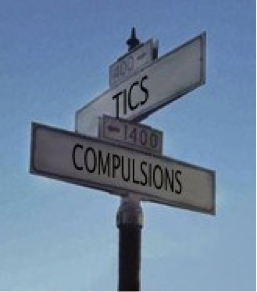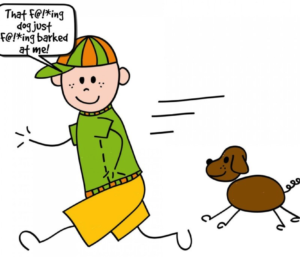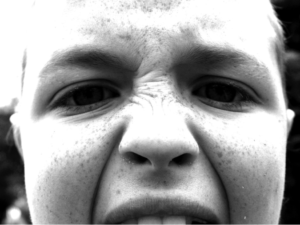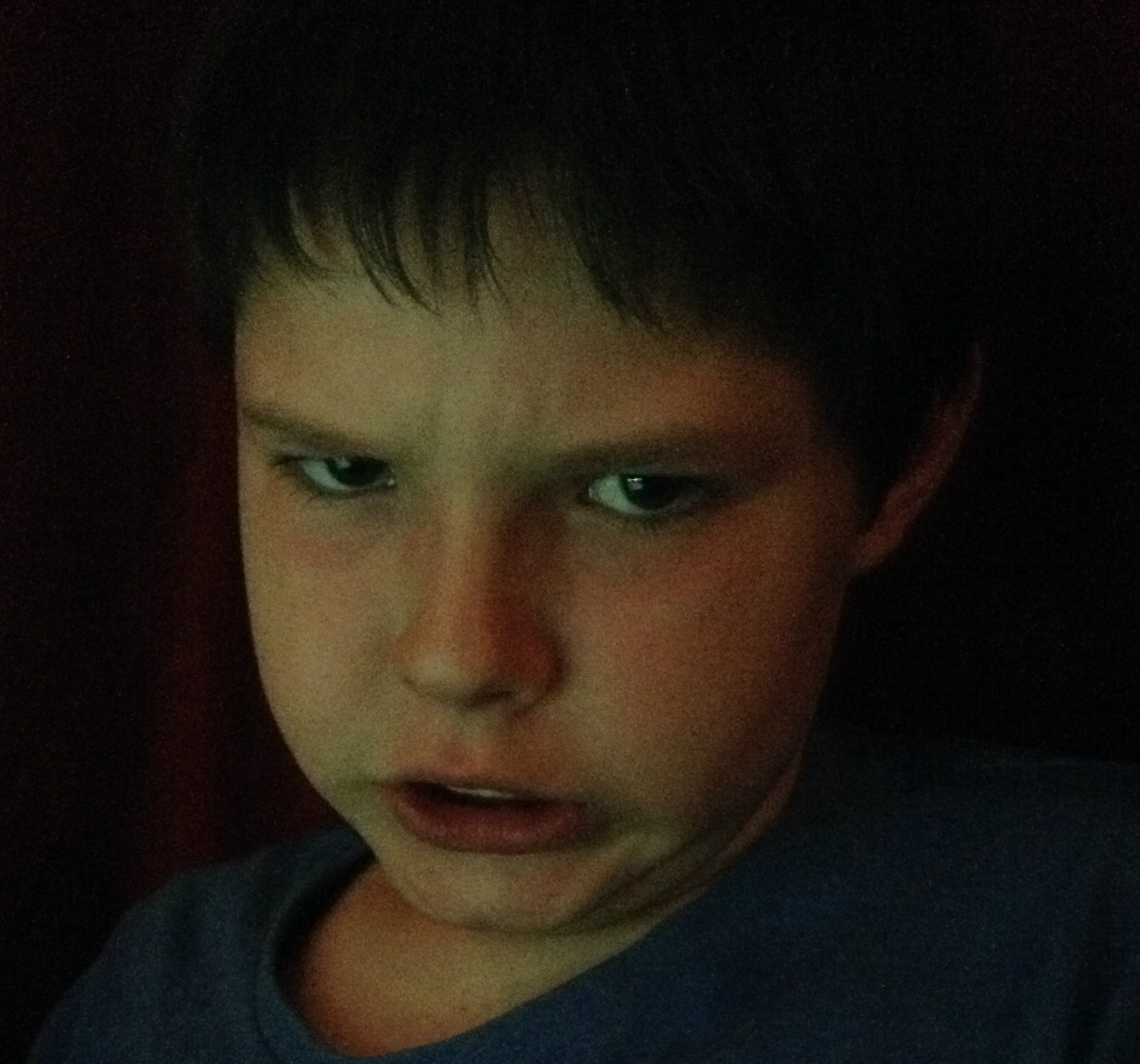Coprolalia Part 1: The Nature of Coprolallia
The Nature of Coprolallia
The term coprolalia is used to describe involuntary vocalizations that are obscene or socially inappropriate. Coprolalia includes swearing, but also includes saying things that are culturally taboo, socially unacceptable or inappropriate due to age or context.
For example, a child using any kind of obscene language, or anyone saying negative comments about another’s ethnicity or physical appearance or anyone screaming “bomb” or “fire” in a public place are all considered coprolalia. Coprolalia may also refer to these phrases or words being said inside the persons head or kept quietly to themselves, which may also cause intense internal distress. Copropraxia refers to gestures and actions of the same nature as coprolalia. Coprolalia can be a symptom of some neurological disorders as well as certain brain injuries and is a rare symptom in Tourette syndrome. As infrequent as it occurs, it is most often misunderstood, and often glamourized by media as a definition of Tourette Syndrome.
 Coprolalia can occur in Obsessive Compulsive Disorder as well as Tourette Syndrome. People who have Obsessive Compulsive Disorder as well as Tourette Syndrome have a greater struggle as the two disorders may interact with each other and may perpetuate coprolalia. The obsession with performing, (or not performing), the inappropriate behaviour provokes the urge to follow through with it, and vice versa. (see Post: Where Tics and Compulsions Meet: TS Plus OCD for how these two disorders may interact)
Coprolalia can occur in Obsessive Compulsive Disorder as well as Tourette Syndrome. People who have Obsessive Compulsive Disorder as well as Tourette Syndrome have a greater struggle as the two disorders may interact with each other and may perpetuate coprolalia. The obsession with performing, (or not performing), the inappropriate behaviour provokes the urge to follow through with it, and vice versa. (see Post: Where Tics and Compulsions Meet: TS Plus OCD for how these two disorders may interact)
Coprolalia is a particularly distressing symptom for people with Tourette Syndrome. The nature of coprolalia, being socially inappropriate, makes everyone involved uncomfortable, that is, until everyone understands what coprolalia is and why it occurs. Education about coprolalia being an involuntary symptom of a neurochemical disorder is essential to bring about acceptance and understanding. Coprolalia can be a lifelong struggle and the individual deserves understanding and acceptance. Coprolalia must be accepted by the family first, to provide the individual with a support system.
 People with coprolalia may feel embarrassed and ashamed of their symptoms. There is no will or want to the expression of coprolalia. Often, the response to coprolalia and the lack of understanding and acceptance from other people amplifies the individual’s shame and embarrassment, leading to isolation. Fear of performing the tic in public and being constantly scrutinized and judged may also lead to isolation and depression. In addition, it drives the individual to constantly think about their coprolalia symptoms -What will I tic? -How will I handle it? -How can I suppress it -Who will laugh or stare? -Who will run away? In turn, the stress and hyper focusing will make the coprolalia occur more frequently and intensely. In this way, benign symptoms of coprolalia become malignant due to the stigmatization and judgment of the onlookers.
People with coprolalia may feel embarrassed and ashamed of their symptoms. There is no will or want to the expression of coprolalia. Often, the response to coprolalia and the lack of understanding and acceptance from other people amplifies the individual’s shame and embarrassment, leading to isolation. Fear of performing the tic in public and being constantly scrutinized and judged may also lead to isolation and depression. In addition, it drives the individual to constantly think about their coprolalia symptoms -What will I tic? -How will I handle it? -How can I suppress it -Who will laugh or stare? -Who will run away? In turn, the stress and hyper focusing will make the coprolalia occur more frequently and intensely. In this way, benign symptoms of coprolalia become malignant due to the stigmatization and judgment of the onlookers.
3 Common Difficulties in Understanding Coprolalia
Coprolalia is usually expressed in complex and variable ways, further leading to the misunderstanding of the involuntary nature of the behaviour. It rarely presents itself as a cut and dry symptom which always challenges everyone’s understanding and acceptance. The three examples below demonstrate how, by the complex nature of the symptom, parents, teachers, the individuals themselves, and onlookers can be constantly challenged to consistently accept coprolalia as a unwanted and uncontrollable symptom of Tourette Syndrome.
A Misunderstanding of Provocation
 Coprolalia, like other tics, is prompted by a premonitory urge. For example, racial slurs may be prompted by seeing a person of a particular race; sexual comments may be prompted by seeing a member of the opposite sex. Seeing these people reminds the brain of forbidden/unacceptable words. Coprolalia co-exists alongside the faulty auto-inhibitory functions within the brain. When faced, for example, with a person of the opposite sex, the person may quickly think “I’d better not say “_______”. By thinking this thought, the individual has put the offensive phrase into their own mind. He/she will then be stuck with the phrase in their head. Coupled with poor impulsivity control, it can appear as if the person is willingly thinking the thought and then saying it without concern for the other person’s feelings. In truth, coprolalia has no relationship or meaning to the observed person and is not a personal attack. There just happened to be something within the environment that prompted that particular urge. For the person with coprolalia, they struggle to prevent themselves from saying or doing the worst possible thing in the particular situation. Imagine having to sit in a church or other place of worship. The mere sight of religious icons evokes meaning in our brains. This meaning cues the brain and conjures words (good and bad). A sufferer of coprolalia will focus on restraining himself or herself from shouting offensive words. This focus will bring these words to the tip of his/her tongue, and eventually out of the mouth. The struggle is internal and far more painful for the individual than those who may overhear the utterance. Coprolalia is not directed at other people nor intended to cause harm or fear in others. Oddly enough, the more a sufferer wants to STOP saying an offensive word, the more likely they are to say it – because of their focus.
Coprolalia, like other tics, is prompted by a premonitory urge. For example, racial slurs may be prompted by seeing a person of a particular race; sexual comments may be prompted by seeing a member of the opposite sex. Seeing these people reminds the brain of forbidden/unacceptable words. Coprolalia co-exists alongside the faulty auto-inhibitory functions within the brain. When faced, for example, with a person of the opposite sex, the person may quickly think “I’d better not say “_______”. By thinking this thought, the individual has put the offensive phrase into their own mind. He/she will then be stuck with the phrase in their head. Coupled with poor impulsivity control, it can appear as if the person is willingly thinking the thought and then saying it without concern for the other person’s feelings. In truth, coprolalia has no relationship or meaning to the observed person and is not a personal attack. There just happened to be something within the environment that prompted that particular urge. For the person with coprolalia, they struggle to prevent themselves from saying or doing the worst possible thing in the particular situation. Imagine having to sit in a church or other place of worship. The mere sight of religious icons evokes meaning in our brains. This meaning cues the brain and conjures words (good and bad). A sufferer of coprolalia will focus on restraining himself or herself from shouting offensive words. This focus will bring these words to the tip of his/her tongue, and eventually out of the mouth. The struggle is internal and far more painful for the individual than those who may overhear the utterance. Coprolalia is not directed at other people nor intended to cause harm or fear in others. Oddly enough, the more a sufferer wants to STOP saying an offensive word, the more likely they are to say it – because of their focus.
Incorporation into Speech
 Another confusing aspect about the expression of coprolalia involves the incorporation of coprolalia into regular speech and actions. This phenomenon is more common in children. The urge to say the word may be strong enough that it will occur within the context of speech. The tic is somewhat satisfied for the child, however; it very much appears as being a voluntary addition. Consider the F_ word as a vocal tic that is coprolalia. The child may voluntarily slip it into speech in a fluent way, satisfying the tic but being unaware of how voluntary the tic appears to be to others. For example, “That f_ing dog just f_ing barked at me”. This is very difficult for others (especially parents and teachers) to understand. I remember telling my child, when coprolalia began for him, to just pick one or two of the words and say them out of a sentence so people would more easily identify it as coprolalia! This strategy didn’t work because he doesn’t have the option to choose which tics he says, and because he never really understood why it would make a difference how or when it was expressed. To him, slipping it into speech was more “normal” than randomly shouting a bad word. And doing it my way didn’t satisfy his urge, of course.
Another confusing aspect about the expression of coprolalia involves the incorporation of coprolalia into regular speech and actions. This phenomenon is more common in children. The urge to say the word may be strong enough that it will occur within the context of speech. The tic is somewhat satisfied for the child, however; it very much appears as being a voluntary addition. Consider the F_ word as a vocal tic that is coprolalia. The child may voluntarily slip it into speech in a fluent way, satisfying the tic but being unaware of how voluntary the tic appears to be to others. For example, “That f_ing dog just f_ing barked at me”. This is very difficult for others (especially parents and teachers) to understand. I remember telling my child, when coprolalia began for him, to just pick one or two of the words and say them out of a sentence so people would more easily identify it as coprolalia! This strategy didn’t work because he doesn’t have the option to choose which tics he says, and because he never really understood why it would make a difference how or when it was expressed. To him, slipping it into speech was more “normal” than randomly shouting a bad word. And doing it my way didn’t satisfy his urge, of course.
Intensity and Frequency Changes
 Another difficult characteristic of coprolalia that further impedes understanding is that stress increases tic frequency and intensity. Parents of children with Tourette Syndrome are very familiar with this phenomena. Both negative and positive stress occupy significant mental attention. In these situations, a child has less mental energy to suppress his/her tic symptoms. As a result, more tics are expressed, to conserve mental energy for all the other things that are consuming the child’s mental resources. Consider that anger, disappointment and frustration are major stresses. When a child attends to these negative emotions, they do not expend energy on suppressing their tics or coprolalia. In a situation that provokes strong feelings of anger in the child, tics and coprolalia escalate. In this type of situation, you will have a child who is angry, using inappropriate language, and louder because you have asked them to do something like “Come do your homework now, please.” What looks like a child reacting disrespectfully and aggressively may simply be a child reacting to a strong emotion, increasing tic expression due to the displacement of mental focus to the emotion. This situation is extremely difficult to manage and creates intense stress on families living with neurological disorders.
Another difficult characteristic of coprolalia that further impedes understanding is that stress increases tic frequency and intensity. Parents of children with Tourette Syndrome are very familiar with this phenomena. Both negative and positive stress occupy significant mental attention. In these situations, a child has less mental energy to suppress his/her tic symptoms. As a result, more tics are expressed, to conserve mental energy for all the other things that are consuming the child’s mental resources. Consider that anger, disappointment and frustration are major stresses. When a child attends to these negative emotions, they do not expend energy on suppressing their tics or coprolalia. In a situation that provokes strong feelings of anger in the child, tics and coprolalia escalate. In this type of situation, you will have a child who is angry, using inappropriate language, and louder because you have asked them to do something like “Come do your homework now, please.” What looks like a child reacting disrespectfully and aggressively may simply be a child reacting to a strong emotion, increasing tic expression due to the displacement of mental focus to the emotion. This situation is extremely difficult to manage and creates intense stress on families living with neurological disorders.
Education about the disorders, symptoms, and their expressions lay the groundwork to understanding, managing and accepting coprolalia.
Video for Coprolalia Part 1: The Nature of Coprolalia


